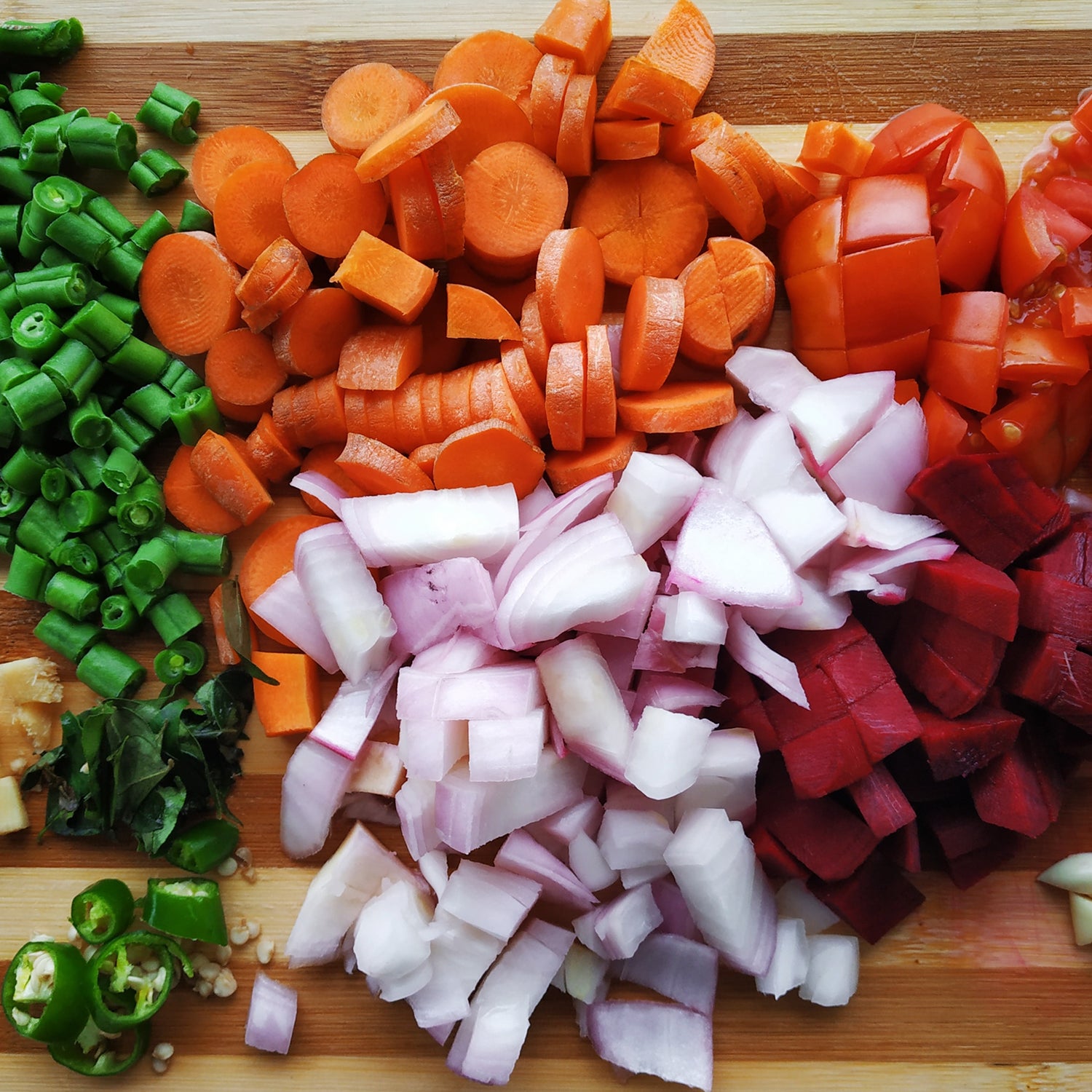If you’ve been thinking about transitioning to more plant-based meals, now is the perfect time to give it a shot. COVID-19 has made the brutality of factory meat production impossible to ignore. Between companies forcing employees��to continue working in processing plants , and caused by coronavirus outbreaks in meatpacking plants, even the most devout bacon lovers may be rethinking their consumption habits.
Beyond the ethics, though, there are other reasons for eating more plants right now, including cost—the staples of the vegan diet, like legumes and whole grains, are very affordable. (Have you noticed the state of��the economy lately?) Most of us also have more time to��try��new recipes. And since we’re socially isolating, it’s not a big deal if eating more fiber makes you, well, unfit for company. “You may be a little gassy at first, but you’ll eventually train your gut,” says Julia Murray, a nutritionist and former Olympian who runs the blog . Murray is also the “chief evangelist” for the app, which helps newbies navigate a plant-based lifestyle.
Besides getting your gut used to all that fiber, here are a few other tips to��make the transition smoother for the vegetarian-curious.
For Every Subtraction, Make an Addition
“The biggest misconception people have is what we [vegetarians] eat,”��says Diane Vukovic, author of , a plant-based cookbook for backpackers who want to dehydrate their own meals. “They imagine what they normally eat, minus the meat, or minus the cheese, or milk, or eggs. In a typical American diet, there’s typically not much left.” For Vukovic, following a��plant-based diet is all about finding substitutions, not making subtractions. Swap in legumes for meat, blend up nuts or seeds to replace cheese, and load that meal with as many different veggies as you can so it feels interesting and complete.
Start with What You Love
“If you don’t like salads, don’t make salads,” says Ken Rubin, chief culinary officer at the online cooking school��.��Murray agrees with this advice. She recommends that new plant-based cooks start with their favorite standby meals: tacos, pasta, whatever you make regularly and love.��
Master the Basics
Knife skills are essential when you’re going to be chopping a ton of veggies, says Rubin. He teaches his students the rolling technique,��in which��you leave the tip of your knife on the cutting board as you chop. The end product isn’t as uniform as slow, careful dicing, but you’ll get through your prep with much less agony.��
Also crucial is mastering the veggie roast. “Roasting concentrates flavor. It’s like going from a grape to a raisin,”��Rubin explains. Veggies are the star of your meal, so boosting their flavor pays big dividends. Note that different vegetables��roast best at different temperatures, because they have varying hydration and sugar levels. Experiment by��turning the heat of your oven��up or down to see which results you like best.
Focus on��the Sauce��
Greens, grains, and legumes may be healthy, but they aren’t flavor superstars. This can be a benefit, because you can eat them a thousand different ways. However, it’s up to you to bring the acid, salt, and umami to the table. The best way to do that, says Murray, is to learn how to construct great vegan sauces. First, stock your cabinet with staples like tahini, miso paste, liquid amino acids, nutritional yeast, and soy sauce, plus an array of vinegars. Then��think about how you can make a sauce interesting. Ground nuts can add texture and richness. Sesame and walnut oil can add depth. Blended beans can add protein and heft, says Vukovic.
Embrace Meat Substitutes��
Some snobby��longtime vegans scoff at these products, but they can make the transition easier, says Murray. Yes, fake meat often has high levels of sodium,��and it’s usually processed. Still, some options are surprisingly tasty and can be swapped into your favorite meals without much recipe troubleshooting.
Watch Your Macronutrients—but Not Too Much��
Vukovic tries to include a source of carbs, protein, and fat in every meal. But she doesn’t track her macros beyond that. According to Murray, in North America��it’s more common for people to eat too much protein than too little. “Protein deficiency is not something we see,” she says. Plants contain all the amino acids that make up protein, so as long as you’re eating a range of plants, legumes, and whole grains, you’re probably getting what you need.��
Add Texture
A lot of vegan staples are soft: tofu, beans, steamed greens. That can make for meals that, even while flavorful, feel like they’re lacking a certain something. Texture is the issue, says Vukovic. “Lentils, for example, end up in a ton of veggie meals, but they absorb a ton of water,” which makes them mushy, she says. Add lentils as a stand-in for meat in your spaghetti and you’re going to have a plate of squish on top of squish. You can, however, add texture by toasting cooked lentils in the oven. Or��save the lentils for a topping on a salad full of crisp, crunchy lettuce.��
Get to Know the Vegan Stand-Ins��
To make vegan cheese at home, soak cashews overnight, blend them in your food processor, then flavor them with nutritional yeast and maybe even a touch of liquid smoke, says Vukovic. Eggs are easy to replicate, too, she says—tofu scrambles filled with veggies can replace your breakfast omelet. In baked goods, ground flaxseeds mixed with water and a pinch of baking powder��can offer��the lift eggs normally provide. Jackfruit has a texture similar to pulled pork, and tempeh will fill the gap on any recipe that could be enhanced by��a chewy component. In other words, with a little bit of insider info, you really can get every taste, texture, and macronutrient you need��from plants. Just��get in the kitchen and start experimenting.��


